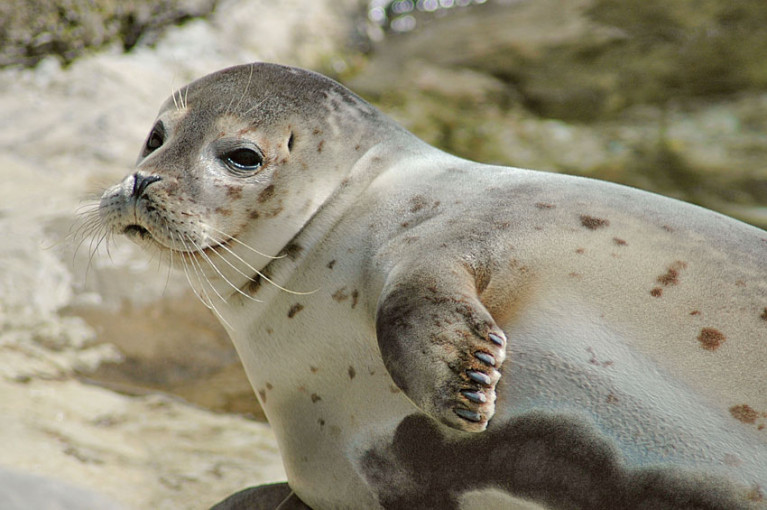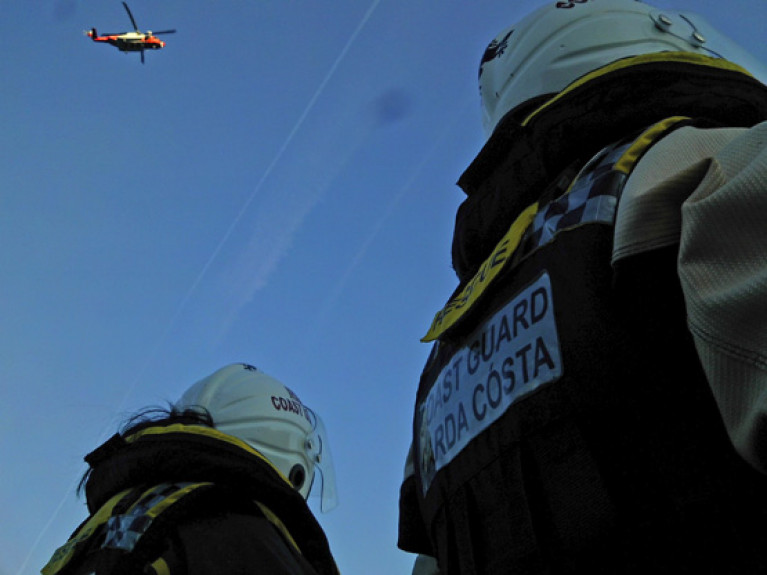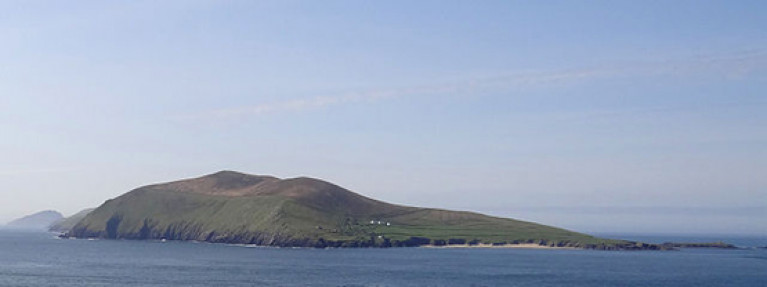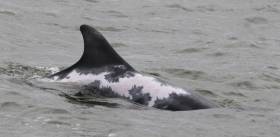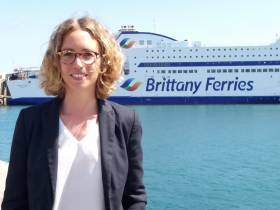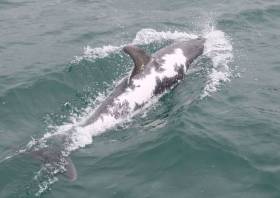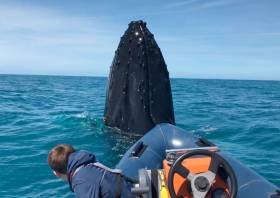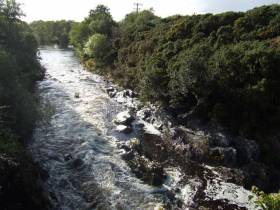Displaying items by tag: Kerry
Plans For Fishermen’s Seal Cull By Rifle Branded ‘Insane’
Plans to allow for the culling of seals by fishermen with high-powered rifles have been branded as “insane” by a conservation expert.
According to the Irish Examiner, the Government is looking into the granting of licences that would permit fishermen to shoot seals in order to protect their catches.
The move follows claims by local fishermen in Kerry that seal colonies in the Blasket Islands — a Special Area of Conservation — and elsewhere are largely responsible for depleted fish stocks and damage to nets, a situation which they say is “unsustainable”, as previously reported on Afloat.ie.
While a licence for the Blaskets was refused, one of four others this year has been approved, and the rest — across Kerry and Cork — are being considered by Local Government Minister Darragh O’Brien.
“There are concerns about this approach to seal management, given the potential safety concerns arising from using high-powered rifles on moving platforms,” the minister said in a written response to Kerry TD Micael Healy-Rae.
"Nonetheless, my department is examining the potential for a pilot scheme which would test this approach and determine its efficacy in protecting fishermen’s catches.”
However, Irish Wildlife Trust’s Pádraic Fogarty said the idea of “shooting seals with rifles from boats is insane”, and suggested that chronic overfishing and bottom trawling have had a greater impact on available catches.
His comments echoed those of the Irish Seal Sanctuary earlier this year. Its co-founder Brendan Price told RTÉ that culling seals by gun is “essentially wasting a bullet, it’s futile”.
The Irish Examiner has much more on the story HERE.
Major Search Operation For Sea Angler Missing Off Kerry Coast
Independent.ie reports that a major search and rescue operation was launched last night (Wednesday 26 August) for a sea angler on the Kerry coast.
The man reportedly fell into the water while fishing at Kerry Head.
His angling partner entered the water after him to attempt a rescue, but got into difficulty and was recovered shortly after.
Elsewhere, the body of a fisherman who went missing from his boat of Teelin in Co Donegal just hours before was found late last night.
And a young man has spoken of his role in a ‘terrifying’ rescue of a 10-year-0d boy in difficulty in the water off Com Dhíneol in West Kerry yesterday afternoon.
Twenty-two-year-old Mícheál Keogh sprang into action with another man, Dan Sullivan, to assist the boy’s two uncles in retrieving the youngster amid the strong current.
“It’s a very dangerous place to swim,” Keogh told RTÉ Radio 1’s Morning Ireland. “None of them could swim so it was mad altogether but we were able to get them out.”
TheJournal.ie has more on the story HERE.
Fenit Lifeboat Guides Dolphin Out Of Danger In Shallow Waters
It was a most unusual callout for Fenit RNLI yesterday evening (Tuesday 25 August) as they were tasked to a dolphin in the shallows near Fenit Pier in Co Kerry.
Locals out for a stroll in blustery conditions that trailed Storm Francis spotted the solo cetacean, and the local lifeboat crew sought help from the Irish Whale and Dolphin Group (IWDG) as for how to proceed.
Their advice was to encourage the dolphin into deeper water if possible, and Fenit RNLI went into action, assisted by local sea vessels in the area the time.
Thanks to their joint effort, the dolphin was gently steered in the direction of open water — and its hoped the marine mammal is now safety swimming at sea.
Lifeboat press officer Jackie Murphy said: “This is an opportunity to remember that the lifeboat crews are volunteers and this is one of the rare occasions where Fenit RNLI experience saving an animal.”
‘Cull Not The Answer’ Says Seal Sanctuary As Fishermen Renew Call
The Irish Seal Sanctuary has said a seal cull is not the answer to the woes of Dingle Peninsula fishermen, who claim a booming population of the protected marine wildlife is putting their livelihood at risk.
Sanctuary co-founder Brendan Price told RTÉ News that “you’re essentially wasting a bullet, it’s futile” as “an apex predator such as a seal is controlled by the available food source”.
Late last year, inshore fishermen who work around the Blaskets, which is a Special Area of Conservation, blamed the local seal colonies for depleted fish stocks and damage to their nets, arguing the situation was “unsustainable”.
Now the fishermen say they are “at breaking point”, with one claiming that seals actively follow their boats to target their catch.
RTÉ News has more on the story HERE.
Kerry Fishermen In Call For Seal Cull Over ‘Unsustainable’ Stock Depletion
Depleted fish stocks and damage to nets in and around the Blaskets are “unsustainable”, argue local fishermen who have called for a cull of the area’s seal population, as the Irish Examiner reports.
The inshore fishermen allege that colonies of grey and common seals in the Blaskets — both protected marine wildlife species in the EU and within a Special Area of Conservation — are responsible for depleted pollock stocks, among others, which it is said is forcing smaller fishermen out of the industry over winter or even permanently.
Fisherman Adam Flannery told a public meeting in Dingle before Christmas: “We are looking for a cull. Because if we do not get a cull in six to eight months, within a few years there won’t be any inshore boat in Dingle.”
The Irish Examiner has more on the story HERE.
More Sightings Off Kerry Of Miracle Dolphin ‘Spirtle’
Marine wildlife miracle Spirtle appears to have taken up residence off the Kerry coast if the many sightings over recent weeks are anything to go by.
Last month the young dolphin was spotted in the area some weeks after she was seen off the East Coast, headed south from her usual haunt off the west of Scotland.
Indeed, it was there where she live stranded in 2016 and suffered severe sunburn, which left her with her distinctive markings.
Despite fears that she wouldn’t survive her ordeal, Spirtle returned to fine health and is now part of a small pod regularly feeding off Feit in Tralee Bay, and which includes a juvenile, according to the Irish Whale and Dolphin Group (IWDG).
Researchers are now trying to establish if Spirtle became part of this group after her long travels, or whether they swam with her from Scotland.
Initial evidence suggests at least two of her pod are Scottish regulars, including Spirtle’s own mother Porridge.
“We have documented movements of individual bottlenose dolphins between Ireland and Scotland before, but we do not know how often this occurs or whether it is typical behaviour,” the IWDG said.
“We hope to continue to monitor the presence of this famous ‘Scottish’ dolphin and see if she stays or travels further,” the group added.
New Names Announced for Brittany Ferries Expanding Fleet Set to Significantly Reduce CO2
Kerry has been announced as the name of Brittany Ferries ropax vessel that Afloat.ie previously reported is to be introduced in November 2019.
The ship Afloat adds is a Visentini-class designed ropax likewise to the existing Ireland-Spain serving Connemara. Kerry will cover the Cork-Santander route from November 2019 to November 2020.
The company has also revealed that Santoña (a town located in Cantabria and pronounced Santonia in English) has been chosen for the company’s third E-Flexer class ship. To be chartered from Stena, Santoña is part of the company’s €550 million fleet renewal programme, with a clear focus on sustainable development. Santoña will arrive in 2023 and like sister ship Salamanca, she will be powered by environmentally-friendly Liquefied Natural Gas (LNG).
Three new LNG vessels on the horizon:
Santoña will be the third LNG powered vessel to join the Brittany Ferries fleet. The fuel burns more efficiently than diesel,so promises significant improvements in air quality as well as a reduction in greenhouse gas emissions.
Combustion produces no sulphur, virtually no particulates and 95% less NOx (nitrogen dioxide) than diesel. LNG is also up to 28% better in terms of greenhouse gas emissions according to findings of an independent, peer-reviewed report published in April this year*.
“Brittany Ferries is committed to LNG as the most environmentally-friendly fuelling solution currently available for shipping,” said Frédéric Pouget, Brittany Ferries director of fleet and port operations. “Despite the significant investment made in scrubber technology for our ships, we know that the best way to respect the environments in which we operate, and to exceed emission reduction targets, is to commit to LNG. This is what we have done with an investment worth half a billion euros.”
The company’s first LNG ship, Honfleur, will be operational next year. She is currently under construction in Germany and will serve the company’s busiest Portsmouth to Caen route. Salamanca will arrive in 2022 to carry passengers and freight on long haul routes between the UK and Spain. Santoña will join the fleet in 2023.
Cutting CO2 per passenger by 46%:
The company’s fleet renewal programme promises a significant reduction in carbon emissions per passenger compared with vessels currently operating between the UK and Spain. That’s because Cap Finistère and Baie de Seine, are less efficient vessels with much smaller passenger and freight capacities than the LNG e-Flexer class ships that will replace them
The company will also run four round trips from the UK to Spain each week, instead of five. This means a significant saving in fuel consumption and emissions, while still promising a 10% improvement in passenger capacity and 28% increase in freight space.
These savings, combined with improved efficiency thanks to better hull design and modern engines, and the use of LNG to power vessels, will realise an estimated saving of around 46% CO2 per passenger compared with current vessels on the company’s long-haul routes.
LNG refuelling:
In terms of refuelling infrastructure, Brittany Ferries has developed an innovative solution to re-fuel its first LNG vessel, Honfleur. In partnership with Total, industry-standard, containerised LNG will be trucked on board, then lifted into position by on-board cranes where they will replenish Honfleur’s fixed, on-board LNG storage tank. The process will be reversed when mobile tanks are empty.
Additional costs of Honfleur’s LNG systems and equipment have been partially offset by the support of the French Government “Program of Investments for the Future” (“Vehicle of the Future” sub-program) and operated by ADEME.
For Spanish operations, Brittany Ferries has signed a letter of intent with Spanish energy company Repsol for the delivery of LNG. Under the agreement between the two companies, Repsol will install quayside LNG storage facility at ports in northern Spain. Confirmation is expected later this month. This will then be used to fuel both E-Flexer ships during their calls.
The E-Flexer class ships will be amongst the largest in Brittany Ferries’ fleet. Each will be 215 metres long with 3,000 garage lane metres for freight vehicles, and capacity for around 1,000 passengers.
Spirtle The Dolphin In High Spirits Off Kerry
Nearly two months after she was spotted off the East Coast, Spirtle the dolphin has been filmed frolicking off the shores of Kerry, as the Irish Mirror reports.
The young dolphin is distinctive for the heavy scarring and discolouration on her right flank — caused by severe sunburn wen she live stranded on a Scottish beach in 2016.
Having bounced back from that brush with death, her wounds gradually healing over the years, Spirtle was recently sighted at the lead of a group of bottlenose dolphins that was making its way south along the Irish Sea.
Marine wildlife experts are now trying to establish if this pod has now made it to the Kingdom, as Spirtle was caught on camera by Dr Joanne O’Brien in recent days with around 20 other bottlenose dolphins in Tralee and Brandon bays.
There is no word as yet on whether Spirtle and her colleagues paid a visit to Dingle’s longtime resident dolphin, Fungie.
Father and son Terry and Tomás Deane went out from the Kerry coast on the longest day of the year with the intention of finding marine wildlife.
But little did they expect they would come face-to-face with a pod of humpback whales — one of which spyhopped off the bow of their RIB.
As RTÉ news reports, the duo spent an hour watching the pod of three humpbacks feeding some 15 miles north-west of Brandon before the cetaceans approached their small boat.
The magical moment when a 14-year-old boy came face to face with a humpback whale off the Co Kerry coast ? pic.twitter.com/g6Yr0MP3zr
— RTÉ News (@rtenews) July 16, 2019
Using a GoPro camera, they were able to film the whales swimming about around and beneath their vessel before the surprising moment when one spyhopped — surfaced vertically to get a better look — just feet away.
“It was unreal,” says Terry. “We were shaking, not with fear, but in awe.”
RTÉ News has more on the story HERE.
Kayaker Dies In Kerry River Incident
#Kayaking - RTÉ News reports on the death of a woman in her 30s in a kayaking incident on the River Roughty near Kilgarvan in Co Kerry yesterday (Sunday 4 November).
The Cork woman was one of a group that had been kayaking in an area popular for enthusiasts of the watersport. Rescuers recovered her body two hours after she got into difficulty around noon.
The Irish Times has much more on the story HERE.


























